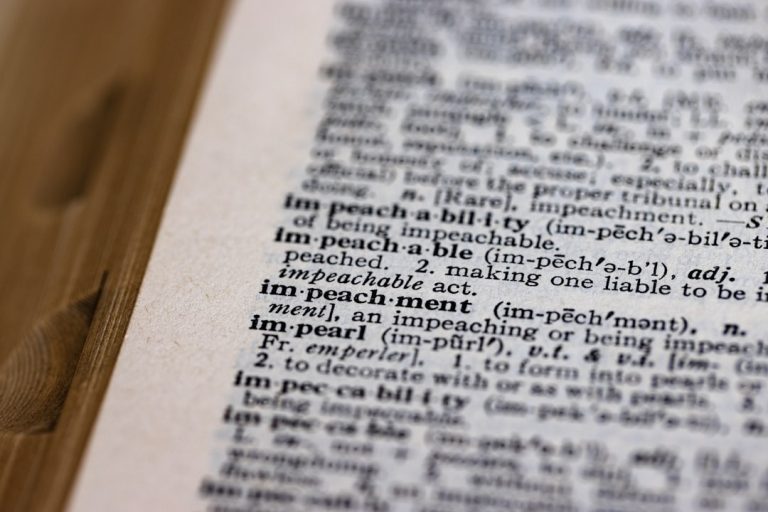
Adjectives and adverbs are two fundamental parts of speech that enrich the English language by adding detail and nuance to sentences. An adjective is a word that modifies a noun or pronoun, providing additional information about its qualities, quantities, or characteristics. For instance, in the phrase “the tall building,” the adjective “tall” describes the noun “building,” giving the reader a clearer picture of its height.
Adjectives can also indicate possession, as seen in “her book,” where “her” specifies ownership. They can be categorized into various types, including descriptive adjectives, demonstrative adjectives, and quantitative adjectives, each serving a unique purpose in communication. On the other hand, adverbs modify verbs, adjectives, or other adverbs, often providing context regarding how, when, where, or to what extent an action occurs.
For example, in the sentence “She runs quickly,” the adverb “quickly” modifies the verb “runs,” indicating the manner of running. Adverbs can also modify adjectives, as in “very tall,” where “very” intensifies the adjective “tall.” Understanding the distinction between these two parts of speech is crucial for effective writing and speaking, as they help convey precise meanings and enhance the overall clarity of communication.
Key Takeaways
- Adjectives describe nouns, while adverbs modify verbs, adjectives, and other adverbs.
- Adjectives should be placed before the noun they describe, while adverbs can be placed before or after the verb they modify.
- Comparative forms of adjectives and adverbs are used to compare two things, while superlative forms are used to compare three or more things.
- Adjectives and adverbs can be used to add detail and precision to writing by providing specific descriptions and enhancing the meaning of sentences.
- Common mistakes with adjectives and adverbs include using them incorrectly, misplacing them in sentences, and creating dangling modifiers.
Proper Usage of Adjectives and Adverbs in Sentences
The Importance of Adjective and Adverb Placement in Effective Writing
Proper Adjective Placement for Clear Sentences
Adjectives play a crucial role in constructing clear and effective sentences. To use them correctly, it is essential to place them in the right position in relation to the nouns they modify. Typically, adjectives come before the nouns they describe, as in “a beautiful sunset.” However, they can also follow linking verbs, such as in “The sunset is beautiful.” This flexibility allows for varied sentence structures, but it requires careful attention to ensure that the adjective clearly relates to the intended noun.
Effective Adverb Placement for Clarity and Emphasis
Adverbs, too, require careful placement to maintain clarity and achieve the desired emphasis. While many adverbs are positioned after the verb they modify, such as in “He sings beautifully,” they can also appear at the beginning or end of a sentence for emphasis or stylistic reasons. For example, “Quickly, she finished her homework” emphasizes the speed of her action.
The Risks of Overusing Adverbs and the Power of Strong Verbs
However, overusing adverbs can lead to vague or redundant writing. Therefore, it is often more effective to choose strong verbs that convey action without relying heavily on adverbs. For instance, instead of saying “He ran very fast,” one might say “He sprinted,” which conveys both speed and intensity without additional modifiers. By using strong verbs and placing adjectives and adverbs correctly, writers can create clear, effective, and engaging sentences.
Comparative and Superlative Forms of Adjectives and Adverbs

Comparative and superlative forms of adjectives and adverbs are used to compare differences between two or more entities. The comparative form typically ends in “-er” or uses “more” before the adjective or adverb when comparing two items. For example, “taller” is the comparative form of “tall,” as in “She is taller than her brother.” Similarly, for adverbs like “quickly,” one would say “more quickly” when making comparisons: “She runs more quickly than he does.” This structure allows speakers and writers to articulate distinctions clearly and effectively.
The superlative form is used when comparing three or more items and often ends in “-est” or employs “most.” For instance, “tallest” is the superlative form of “tall,” as seen in “She is the tallest in her class.” In terms of adverbs, one would say “most quickly” for comparisons among multiple subjects: “Of all the runners, she finished most quickly.Mastering these forms is crucial for effective communication, as they provide a framework for expressing relative qualities and actions succinctly.
Using Adjectives and Adverbs to Describe Nouns and Verbs
| Adjectives and Adverbs | Examples |
|---|---|
| Describing Nouns | beautiful scenery, delicious food, fast car |
| Describing Verbs | quickly ran, carefully crafted, happily danced |
Adjectives serve as powerful tools for describing nouns by providing specific details that enhance understanding. For example, consider the phrase “the ancient oak tree.” Here, both “ancient” and “oak” work together to create a vivid image in the reader’s mind. The adjective “ancient” not only describes the age of the tree but also evokes a sense of history and grandeur.
Similarly, adjectives can convey emotions or conditions, such as in “a joyful celebration,” where “joyful” adds depth to the noun “celebration.” Adverbs play a complementary role by modifying verbs and adding layers of meaning to actions. For instance, in the sentence “He spoke softly,” the adverb “softly” provides insight into how he delivered his words. This not only informs the reader about the manner of speaking but also sets a tone for the interaction.
Additionally, adverbs can indicate frequency or intensity; for example, “She often visits her grandmother” suggests regularity in her actions. By skillfully employing adjectives and adverbs, writers can create more engaging narratives that resonate with readers on multiple levels.
Avoiding Common Mistakes with Adjectives and Adverbs
Despite their utility, adjectives and adverbs are often misused in writing. One common mistake involves confusing adjectives with adverbs. For instance, many people mistakenly say “He runs quick” instead of the correct form “He runs quickly.” This error arises from a misunderstanding of how each part of speech functions within a sentence.
Another frequent error is overusing adjectives and adverbs to embellish writing unnecessarily. While descriptive language can enhance a narrative, excessive modifiers can lead to cluttered sentences that detract from clarity.
For example, instead of saying “The very tall man walked very slowly down the street,” one could simply say “The tall man strolled down the street.” This revision maintains essential details while eliminating redundancy. Writers should strive for precision and conciseness by selecting strong nouns and verbs that convey meaning without relying heavily on modifiers.
Identifying and Correcting Misplaced and Dangling Modifiers

Misplaced Modifiers
Misplaced modifiers occur when an adjective or adverb is positioned incorrectly within a sentence, leading to confusion about what it modifies. For example, consider the sentence “She almost drove her kids to school every day.” The placement of “almost” suggests that she did not drive her kids at all rather than implying she nearly did so regularly. A clearer version would be: “She drove her kids to school almost every day.” This correction clarifies that her driving was frequent but not constant.
Dangling Modifiers
Dangling modifiers present another challenge; they occur when a modifier does not clearly refer to any word in the sentence. For instance, in the sentence “After reading the book, the movie was disappointing,” it appears that the movie read the book rather than a person who read it. A corrected version would be: “After reading the book, I found the movie disappointing.” This revision clarifies who performed the action and ensures that modifiers accurately reflect their intended subjects.
Importance of Clarity
Modifiers can greatly impact the clarity of a sentence, and using them correctly is crucial to effective communication. By being mindful of misplaced and dangling modifiers, writers can ensure that their sentences convey their intended meaning and avoid confusion.
Using Adjectives and Adverbs to Add Detail and Precision to Writing
Adjectives and adverbs are invaluable tools for adding detail and precision to writing. By carefully selecting descriptive words, writers can create vivid imagery that engages readers’ senses and emotions. For example, instead of simply stating “the dog barked,” one might say “the small terrier barked loudly at the passing car.” This revision not only specifies the type of dog but also conveys its size and behavior more effectively.
In addition to enhancing imagery, adjectives and adverbs can provide clarity regarding actions and states of being. Consider how an adverb can change a sentence’s impact: “He completed his work” versus “He completed his work meticulously.” The latter conveys a sense of thoroughness that adds depth to understanding his approach. By incorporating well-chosen adjectives and adverbs into their writing, authors can create more compelling narratives that resonate with their audience while ensuring clarity and precision.
Practice Exercises to Improve Mastery of Adjectives and Adverbs
To master adjectives and adverbs effectively, engaging in practice exercises can be highly beneficial. One exercise involves identifying adjectives and adverbs within sentences. For example: “The quick brown fox jumps over the lazy dog.” Participants should underline or highlight “quick,” “brown,” “lazy,” identifying them as adjectives while noting that “jumps” is modified by an implied adverb indicating action.
Another useful exercise is transforming sentences by replacing weak verbs with stronger ones or by eliminating unnecessary modifiers. For instance, take “She ran very fast” and revise it to “She sprinted.” This not only enhances clarity but also encourages writers to think critically about their word choices. Additionally, creating comparative and superlative forms from given adjectives can reinforce understanding; for example: turning “bright” into “brighter” and “brightest.” Such exercises foster a deeper grasp of how adjectives and adverbs function within language while promoting more effective writing skills overall.
If you are interested in improving your English writing skills, you may want to check out the article How to Improve English Writing: An English Learner’s Guide eBook. This resource can provide valuable tips and strategies for ESL students looking to enhance their writing abilities. By honing your writing skills, you can effectively communicate your thoughts and ideas in a clear and concise manner. Additionally, improving your writing can also help you become more proficient in other areas of English grammar, such as adjectives and adverbs.
FAQs
What are adjectives and adverbs in American English grammar?
Adjectives are words that describe or modify nouns or pronouns, while adverbs are words that modify verbs, adjectives, or other adverbs in American English grammar.
How are adjectives used in American English grammar?
Adjectives are used to provide more information about a noun or pronoun, such as its size, color, shape, or other qualities. They are often placed before the noun they modify.
How are adverbs used in American English grammar?
Adverbs are used to provide more information about a verb, adjective, or another adverb. They can indicate how, when, where, or to what extent something is done.
What are the different types of adjectives in American English grammar?
There are several types of adjectives, including descriptive adjectives (e.g., beautiful, tall), demonstrative adjectives (e.g., this, that), and possessive adjectives (e.g., my, your).
What are the different types of adverbs in American English grammar?
Adverbs can be categorized into different types, such as adverbs of manner (e.g., quickly, carefully), adverbs of time (e.g., now, later), adverbs of place (e.g., here, there), and adverbs of degree (e.g., very, extremely).
How do adjectives and adverbs contribute to sentence structure in American English grammar?
Adjectives and adverbs play a crucial role in providing more detail and specificity to the nouns, pronouns, verbs, or other adjectives and adverbs in a sentence. They help to enhance the overall meaning and clarity of the sentence.






